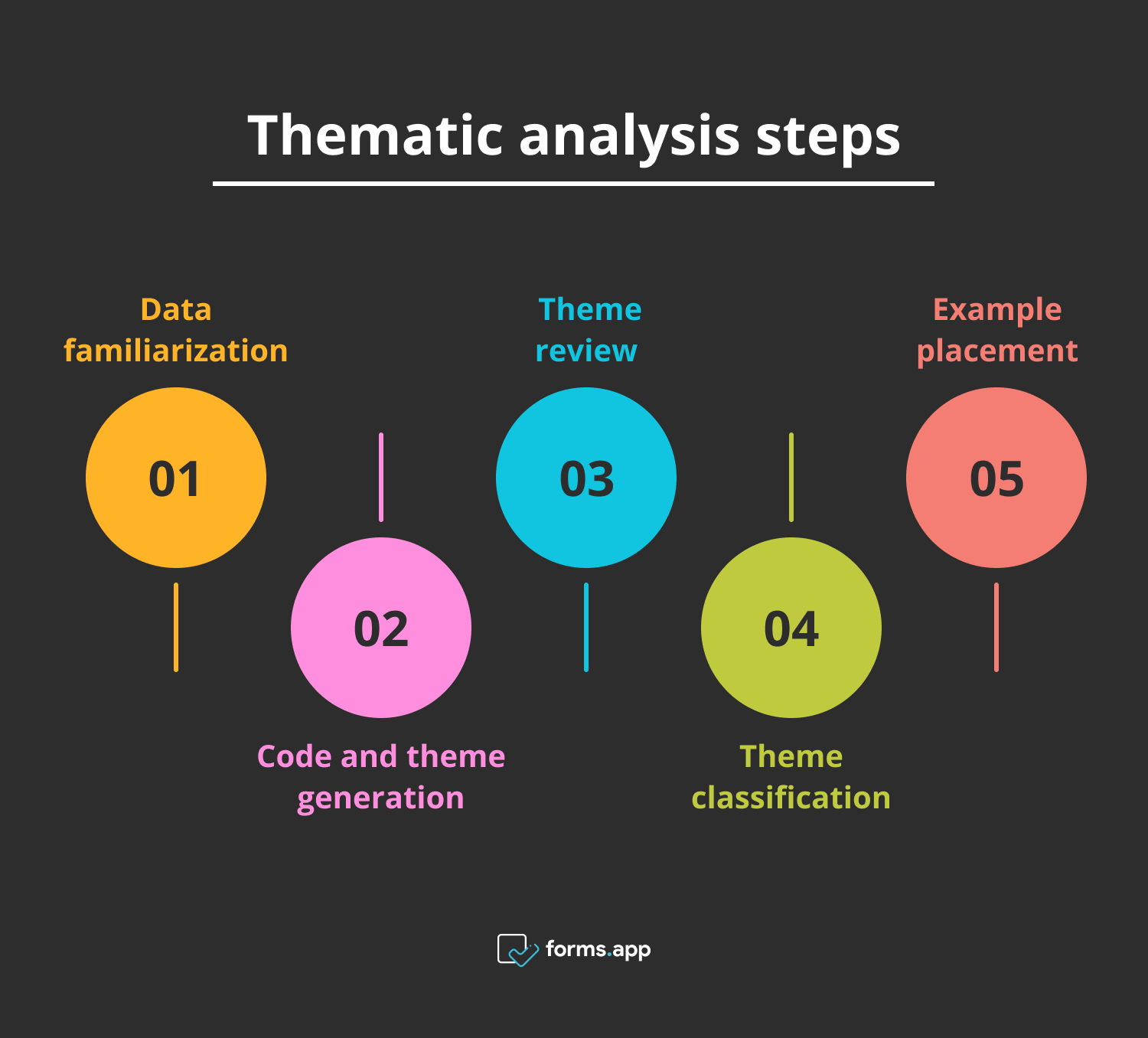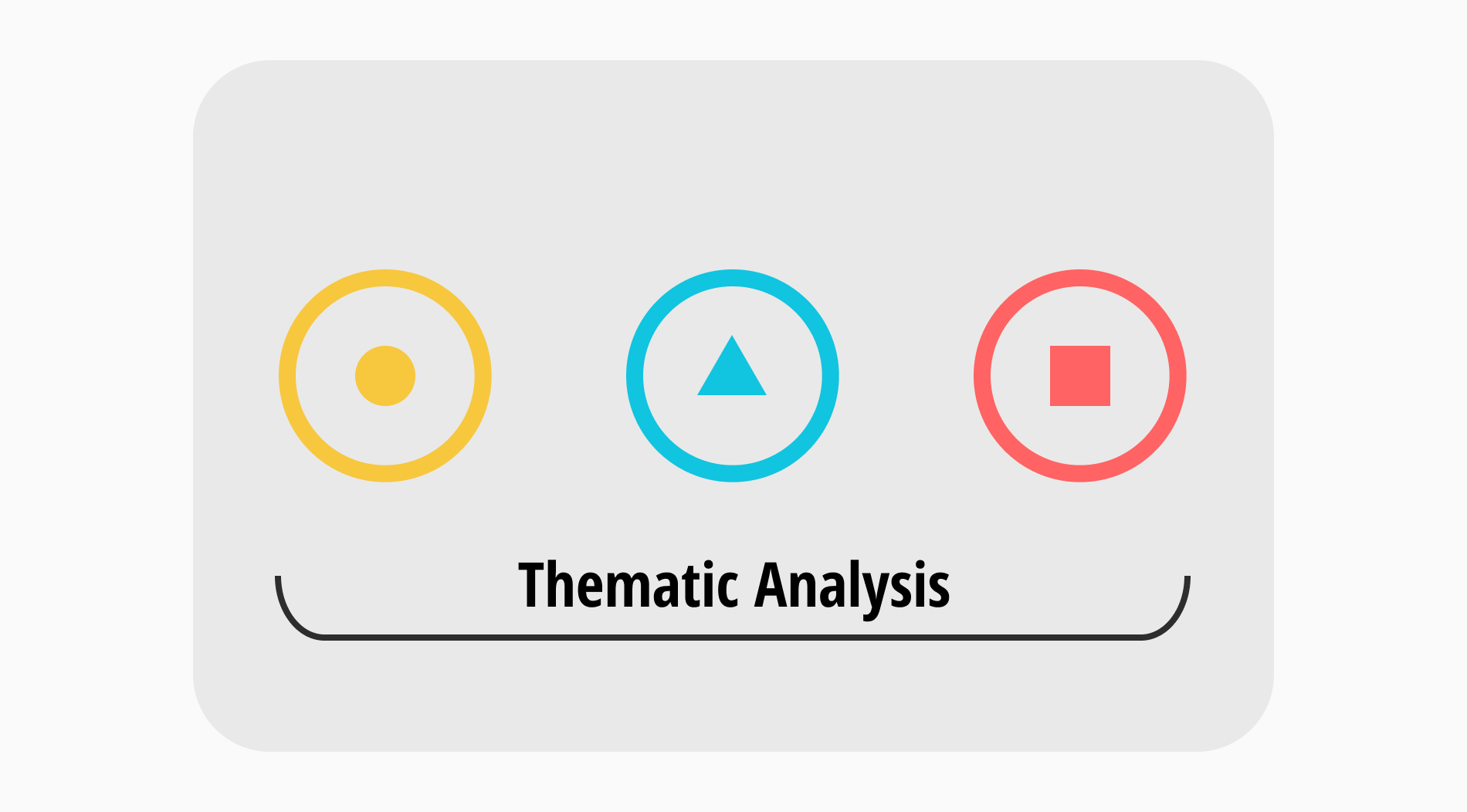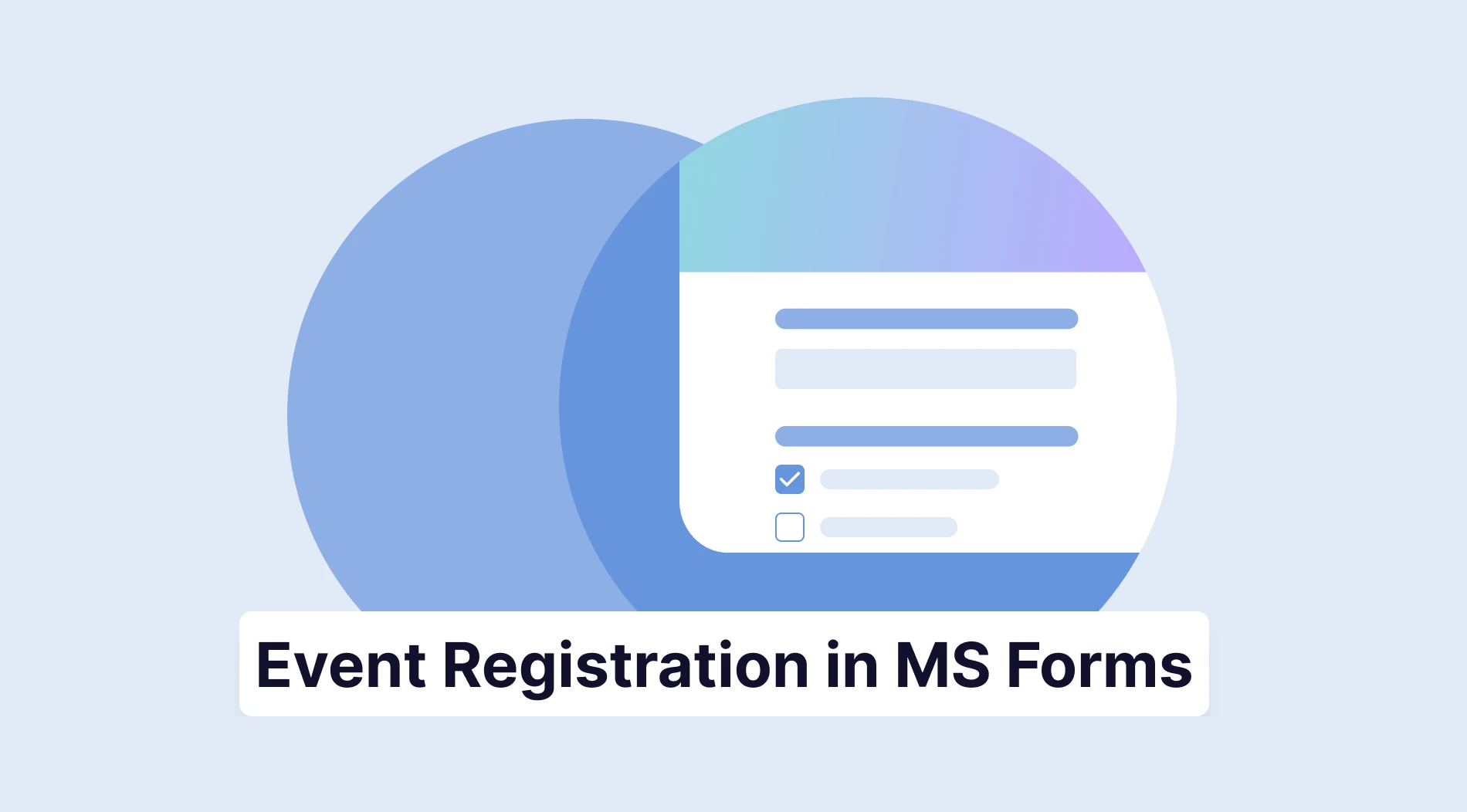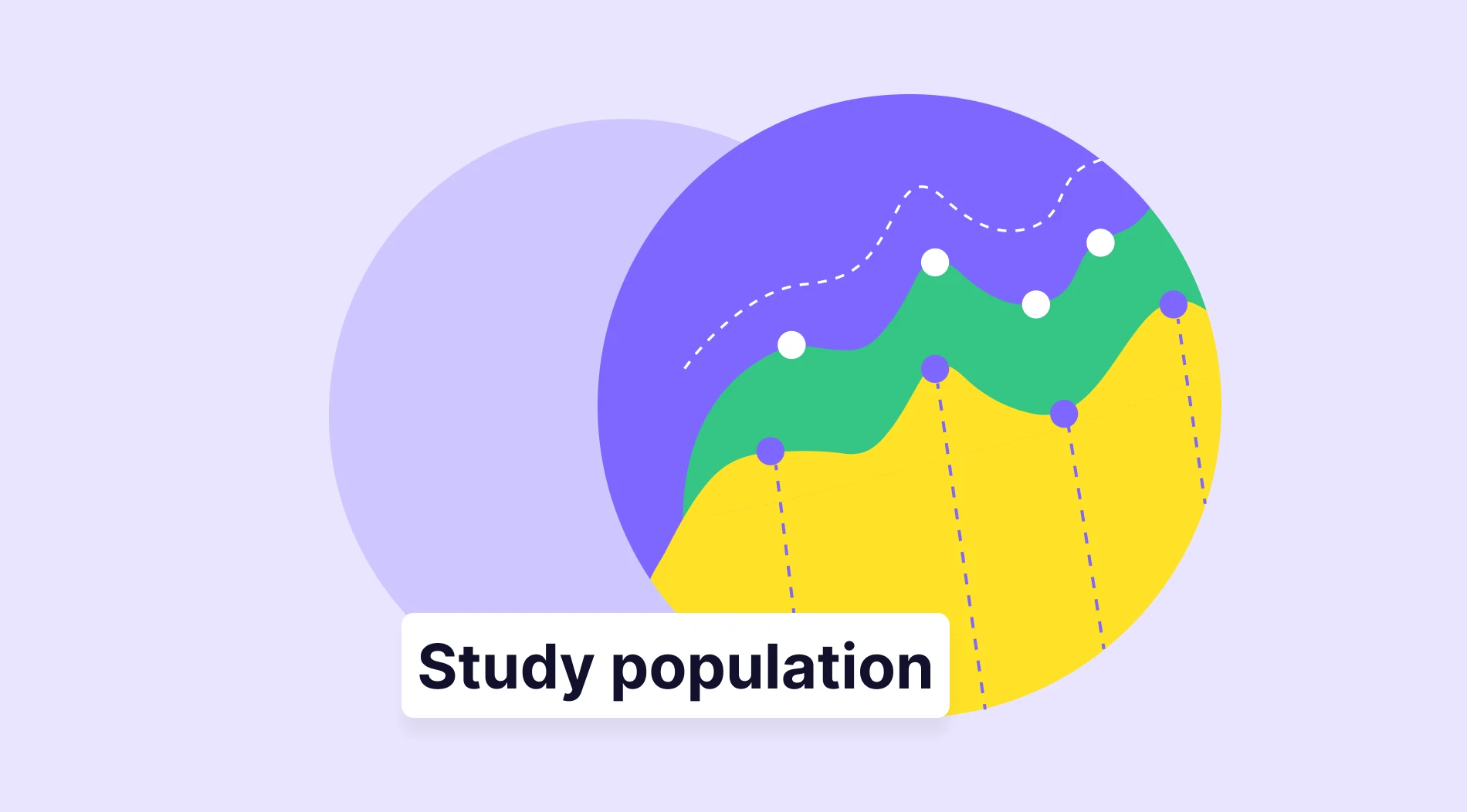You can achieve very important things with thematic analysis, which is one of the most frequently used methods of qualitative analysis. Any business or organization can elevate itself in a better position on any subject with this research method.
This comprehensive article will show you how to identify themes in any qualitative data. For this purpose, it will start with the definition of thematic analysis and explain how to do it step by step. Apart from this, it will present examples and emphasize the importance of this type of analysis with its approaches, advantages, and comparative features.
What is the thematic analysis?
Thematic analysis is one of the qualitative data analysis methods and is used to search for themes and patterns in a set of data.
It is often used to make sense of ideas and concepts that are repeated in a text by focusing on them. Researchers interpret qualitative data by using it in many different disciplines, especially in studies where qualitative data is intense.
Thematic analysis steps
Thematic analysis is primarily known for the Braun and Clarke approach. They say that the nature of thematic analysis in qualitative research consists of five or sometimes six steps. These essential steps are:

Steps to thematics analysis steps
1. Data familiarization
First, you start by converting any visual or audio data into text. You decide what to code and how. You choose the purpose that fits the data. To do this, review the data many times, if necessary read it again and again.
2. Code and theme generation
Create your coding patterns and compile components and subsections. Be careful to use descriptive labels. Especially keep a reflexivity diary. You can use this diary both for your communication with other researchers and to understand cause-and-effect relationships better. Later, similar codes were grouped. Then, potential themes will emerge and respond to your research topic.
3. Theme review
Review once again to ensure the accuracy of coding and identified themes. Check intercluster relationships and theme consistency. If there are parts you think are missing, go back to the previous steps.
4. Theme classification
In this step, it is necessary to determine what the themes represent through sensitive examinations. The labeling process must be finished, and the final version must be ready. Therefore, make sure that you define the definitions correctly and that they are directly proportional to your research.
5. Example placement
The final step is to write down the findings of your thematic analysis. You can give examples and synthesize them with themes to turn them into a narrative with plenty of data evidence.
Examples of the thematic analysis
In this section, there will be a thematic analysis of qualitative research with examples. Let’s assume that you want to evaluate two different studies on job satisfaction and online shopping in the context of thematic analysis.
Example #1
You prepared an open-ended survey of twenty questions for your company employees. This survey is filled with carefully selected questions to measure their commitment, problems, and satisfaction with their work. You then transcribed the results and began to find recurring themes.
You've seen that these themes are about hard-working hours, workload, career development, and salary. You can then analyze these themes and develop appropriate strategies for job satisfaction.
Example #2
You conducted an online survey on your shopping application. Again, you transcribed the responses and found common themes. These are technological challenges, bugs, and campaigns. You can then analyze these themes and review and redevelop your shopping app.
Approaches to thematic analysis
Although thematic analysis is a very simple analysis method, it has its own subtleties and methods. Depending on the purpose of your research question or the type of data, one of these approaches may be more suitable for you. More or less, the main approaches to thematic analysis are:
1. Inductive approach
The inductive approach is a method that does not allow the researcher to manipulate the data collection and analysis process. Themes themselves emerge over the course of the analysis. Thus, there is no bias in revealing what is happening. This research method has an informative aspect, especially when there is not enough information about the research subject.
2. Deductive approach
In the deductive approach, one starts with predetermined categories and initial codes. Therefore, one should first have knowledge about the subject. Appropriate arrangements are made with the codes used in the analysis of the data, and the research results are reached. That's why researchers mainly use it to test their hypotheses.
Advantages and Disadvantages of thematic analysis
Thematic analysis is known primarily as a subjective research method. Therefore, thematic analysis can produce high-quality or poor-quality results in direct proportion to the ability of the researchers. Its advantages and disadvantages generally revolve around this axis of subjectivity. The main ones are:
Advantages
- The data it provides makes it a very flexible type of analysis. This data can be combined with different data analysis techniques, such as exploratory or situational analysis.
- It is suitable for use in large data sets.
- It is a simple method that does not require special programs, programming languages, or complex analyses.
- It is a type of analysis with various dataset opportunities where you can examine any video, image, text, or audio.
Disadvantages
- Because it is subjective, the researcher's bias may confound the results.
- There are no strict rules or methods to follow. It can proceed according to the researcher's subjective experience.
- Patterns of data showing common characteristics may not always be enough to explain the result. As a result of the analysis, a problem such as oversimplification may arise.
- Data coding and sorting themes can take a long time during the data analysis process.
When to use the thematic analysis
Thematic analysis is a valuable type of analysis that can be adapted to various studies. But if you specifically ask when it offers you more productive opportunities, these are:
- When explaining a phenomenon: It is a valuable research method for discovering the causes of any situation. Very similar to narrative analysis, it gathers the subjective expressions, experiences, and narratives of the narrators around theme groups. This way, you get detailed information about the situation.
- When interpreting qualitative data: It is one of the most commonly used methods in examining surveys and interviews prepared with open-ended questions. It meticulously identifies different patterns and makes them interpretable. Thus, you will obtain data that you can use when making important decisions in your business.
- When developing theories and hypotheses: Researchers use this method to test and establish their theories. With the theoretical framework provided by this analysis, they reach results with a very low margin of error. Thus, the basis for any application is prepared.
Content analysis vs. Thematic analysis
They are used to examine data as two different qualitative research methods. But their focus is different. The content analysis measures the content in a text and the frequency of words, images, or expressions. On the other hand, thematic analysis reveals and interprets common themes and patterns in these contents. Other features are as follows:
- You can examine qualitative data in both types of analysis.
- You discover hidden patterns with both methods.
- Both methods are suitable for preparing theoretical infrastructures.
- Content analysis is more suitable for examining quantitative data.
- Thematic analysis often uses an inductive research method.
Frequently asked questions about the thematic analysis
Curious about thematic analysis? Find answers to common questions about this qualitative data analysis method here.
The thematic analysis of Braun and Clarke is a well-known approach. This method involves six steps and is an iterative process. These six steps are recognition of the data, generation of codes, generation of the theme, review of the themes, classification of the themes, and placement of the examples. Thus, through this iterative process, the research is processed step by step. In the end, it gives the most accurate result about focus text.
The semantic approach is used to examine data in an explicit way. It deals only with the surface structure of the data in text, visuals, or audio. It structures expressions in a descriptive manner and derives themes from them.
The two main channels of this analysis are deductive and inductive methods. Inductive thematic analysis tries to reveal the data itself without imposing anything on the data. Deductive thematic analysis, on the other hand, is shaped around presuppositions or theories and tries to find answers to the researcher's goals and questions. Both methods show positive and negative aspects depending on the nature of the data examined and the goal of the research.
When people think of statistical tools, they mostly think of quantitative methods. Thematic analysis, on the other hand, is related to the examination of subjective visual, audio, and textual data such as surveys, observations, interviews, and focus groups. This focus and the absence of numerical data prevent thematic analysis from being a statistical tool.
Before you can create code, the data you will work on must first be created and ready to be processed. Then, manage your data in an organized manner using qualitative analysis software. This will also speed up and facilitate the work of different researchers working at the same time. Don't forget to keep track of your coding decisions. Finally, do not overlook the impact of your own decisions on the interpretation of the data.
Key points to take away
The basics of thematic analysis were explained to you in this article. Firstly, thematic analysis is defined by its general concept. The article shows the steps through which you can perform this analysis. Thematic analysis examples and approaches are explained under different headings.
The pros and cons of thematic analysis are listed. In which situations you can use the analysis are exemplified. Finally, at the end of the article, the difference between thematic and content analysis is explained. At the end of this reading, you are now able to conduct your data research systematically and properly.
Atakan is a content writer at forms.app. He likes to research various fields like history, sociology, and psychology. He knows English and Korean. His expertise lies in data analysis, data types, and methods.
- What is the thematic analysis?
- Thematic analysis steps
- Examples of the thematic analysis
- Approaches to thematic analysis
- Advantages and Disadvantages of thematic analysis
- When to use the thematic analysis
- Content analysis vs. Thematic analysis
- Frequently asked questions about the thematic analysis
- Key points to take away



